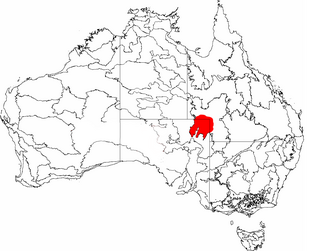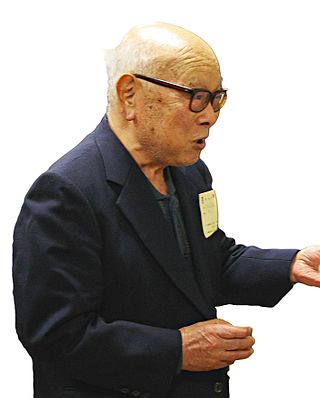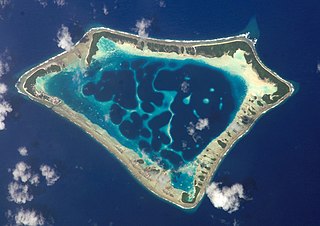Related Research Articles

Geomorphology is the scientific study of the origin and evolution of topographic and bathymetric features generated by physical, chemical or biological processes operating at or near Earth's surface. Geomorphologists seek to understand why landscapes look the way they do, to understand landform and terrain history and dynamics and to predict changes through a combination of field observations, physical experiments and numerical modeling. Geomorphologists work within disciplines such as physical geography, geology, geodesy, engineering geology, archaeology, climatology, and geotechnical engineering. This broad base of interests contributes to many research styles and interests within the field.
Nick Middleton is a British physical geographer and supernumerary fellow of St Anne's College, Oxford. He specialises in desertification.
David S. G. Thomas is a British scientist and geographer. He was born at his parents' home in River, near Dover, Kent, UK, in October 1958. He is Professor of geography at the University of Oxford, the fifth person to hold the Statuary Chair, and a Professorial Fellow of Hertford College, Oxford.

Sturt Stony Desert is an area in the north-east of South Australia, far south western border area of Queensland and the far west of New South Wales.
Sir Ronald Urwick Cooke, FRGS DL is a professor of geography and geomorphology who was vice-Chancellor of the University of York from 1993 to 2002.
Noel Castree FAcSS is a British geographer whose research has focused on capitalism-environment relationships and, more recently, on the role that various experts play in discourses about global environmental change. He is currently at the University of Manchester. He is also the editor-in-chief of the peer-reviewed journal Progress in Human Geography.
David Leslie Linton was a British geographer and geomorphologist, was professor of geography at Sheffield and Birmingham, best remembered for his work on the landscape development of south-east England with S. W. Wooldridge, and on the development of tors.

Marjorie Mary Sweeting, was a British geomorphologist specializing in karst phenomena. Sweeting had gained extensive knowledge on various topographies and landscapes by travelling around the world to places such as Greece, Australia, Czechoslovakia, United States, Canada, South Africa, Belize, and most notably China. She published Karst Landforms, and Karst in China: its Geomorphology and Environment. The latter is the first comprehensive Western account of China's karst, and one of the first western published works on the karst found within China, despite being a male dominated field.

The British Society for Geomorphology (BSG), incorporating the British Geomorphological Research Group (BGRG), is the professional organisation for British geomorphologists and provides a community and services for those involved in teaching or research in geomorphology, both in the UK and overseas. The society’s journal, Earth Surface Processes and Landforms is published by Wiley-Blackwell and online access is available free to members. The society is affiliated with the Royal Geographical Society as an affiliated research group and with the Geological Society of London as a specialist group.

A bornhardt is a dome-shaped, steep-sided, bald rock outcropping at least 30 metres (100 ft) in height and several hundred metres in width. They are named after Wilhelm Bornhardt (1864–1946), a German geologist and explorer of German East Africa, who first described the feature.

A blockfield, felsenmeer, boulder field or stone field is a surface covered by boulder- or block-sized rocks usually associated with a history of volcanic activity, alpine and subpolar climates and periglaciation. Blockfields differ from screes and talus slope in that blockfields do not apparently originate from mass wastings. They are believed to be formed by frost weathering below the surface. An alternative theory that modern blockfields may have originated from chemical weathering that occurred in the Neogene when the climate was relatively warmer. Following this thought the blockfields would then have been reworked by periglacial action.
Andrew Warren is a British physical geographer. He is Emeritus Professor of Geography at University College London, UK.
Alfred Thomas Grove, known more commonly as Dick Grove, was a British geographer and climatologist. He was Emeritus Fellow of Downing College, Cambridge and a Director of the Centre of African Studies at the University of Cambridge. Grove researched Environmental Issues and Policy and the landscape change in southern Europe and Climate change and desertification with a focus on Africa and southern Europe. He was awarded the Busk Medal from the Royal Geographical Society in 1982 for his field work in Africa.
Paul A. Shaw is a physical geographer and a Fellow of the Royal Geographical Society.
Biuletyn Peryglacjalny was a scientific journal covering research on periglacial geomorphology. It was established in 1954 in Łódź by Polish geomorphologist Jan Dylik, who was its editor-in-chief until 1972. The journal ceased publication after 39 issues in 2000, after having played an important role in the development of periglacial geomorphology.
Jean Tricart was a French geomorphologist. In 1948, he became a professor at the University of Strasbourg, where he remained for the rest of his career. The Tricart's doctoral thesis dealt with the Paris Basin and resulted in a publication acclaimed in France. He often collaborated with his friend André Cailleux. From 1962 to 1974, he and Callieux published five works on the subject of geomorphology and climate. Most of his works were published in French.

Eiju Yatsu was a Japanese geomorphologist who taught in Japan, US and Canada. He is best known for his contributions to weathering and 'rock control' in geomorphology.

Climatic geomorphology is the study of the role of climate in shaping landforms and the earth-surface processes. An approach used in climatic geomorphology is to study relict landforms to infer ancient climates. Being often concerned about past climates climatic geomorphology considered sometimes to be an aspect of historical geology. Since landscape features in one region might have evolved under climates different from those of the present, studying climatically disparate regions might help understand present-day landscapes. For example, Julius Büdel studied both cold-climate processes in Svalbard and weathering processes in tropical India to understand the origin of the relief of Central Europe, which he argued was a palimpsest of landforms formed at different times and under different climates.
Rita Ann Moden Gardner, is a British geographer and academic, specialising in geomorphology. Since January 2019, she has been Chief Executive of the Academy of Social Sciences. She taught at St Catherine's College, Oxford (1978–1979), King's College, London (1979–1994), and finally at Queen Mary and Westfield College (1994–1996) where she was Reader in Environmental Science. From 1996 to 2018, she was Director of the Royal Geographical Society: she was the learned society's first female director.
Heather Viles is a professor of biogeomorphology and heritage conservation in the school of geography and the environment at Oxford University, senior research fellow at Worcester College, and honorary professor at the Institute of Sustainable Heritage, University College London. She is a Fellow of the British Society for Geomorphology.
References
- ↑ "Professor Andrew Goudie". School of Geography and the Environment, University of Oxford (England).
- ↑ "Professor Andrew Goudie". St Cross College, Oxford . Archived from the original on 1 December 2017. Retrieved 24 November 2017.
- ↑ Goudie, Andrew (January 2017). Geomorphology in the Anthropocene. Cambridge, England: Cambridge University Press.
- ↑ Summerhayes, Colin P. (7 June 2017). "Holocene book review: Geomorphology in the Anthropocene". The Holocene . 27 (8). New York, USA: SAGE Publications: 1259–1261. doi:10.1177/0959683617712815. S2CID 134275505.
- ↑ Goudie, Andrew (10 December 2016). Great Desert Explorers. London, England: Royal Geographical Society.
- ↑ Goudie, Andrew. (2008). Wheels Across The Desert: Exploration Of The Libyan Desert By Motorcar 1916-1942. Silphum Press, The Society for Libyan Studies. (London, England)
- ↑ Goudie, Andrew. (25 January 2007). Global Environments Through the Quaternary: Exploring Environmental Change. Google Books. Oxford University Press (Oxford, England)
- ↑ Josephine, Mills. (15 July 2013). Review: Global Environments through the Quaternary – Exploring Environmental Change. Papers from the Institute of Archaeology 23(1): 3, pp. 1-2 DOI: pia. (London, England)
- ↑ Goudie, Andrew S. (January 2006). Desert Dust in the Global System. ResearchGate
- ↑ Goudie, Andrew S. (19 January 2014). The Human Impact on the Natural Environment: Past, Present, and Future (A.S. Goudie). Wiley-Blackwell. (6th edn Blackwell, USA/UK 2006. (Oxford, England)
- ↑ Goudie, Andrew S (Editor). (29 January 2014). Encyclopedia of Geomorphology. Publisher: Taylor & Francis Ltd Routledge. (6th edn Blackwell, USA/UK 2006. (London, United Kingdom)
- ↑ Goudie, Andrew S. (29 November 2001). Encyclopedia of Global Change - Environmental Change and Human Society. Oxford University Press. (England, United Kingdom).
- ↑ Goudie, Andrew S. (12 December 2002). Great Warm Deserts of the World. Oxford University Press.(England, United Kingdom).
- ↑ Goudie, Andrew S. (July 2009). The Nature of the Environment, 4th Edition. 'Reviews' tab. Wiley-Blackwell
- ↑ Thomas , David S. G. (Editor), Goudie, Andrew S. (Editor). (May 2013). The Dictionary Of Physical Geography Archived 15 March 2018 at the Wayback Machine . Wiley-Blackwell.
- ↑ "Medals and Awards: Gold Medal Recipients" (PDF). Royal Geographical Society . London, England.